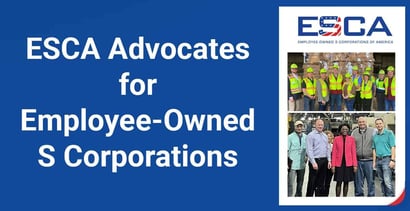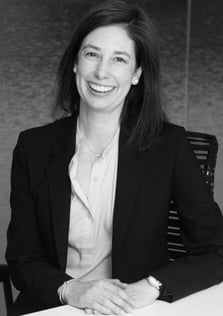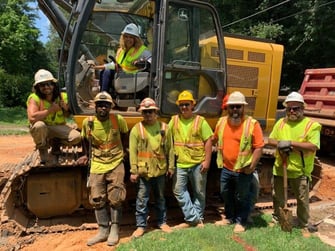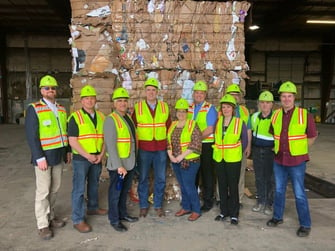
In a Nutshell: Employee stock ownership plans (ESOPs) are benefit plans that provide workers with retirement savings through their investments in their employer’s stock. In 1998, Congress permitted ESOPs to become shareholders in S corporations, businesses that pass their income directly to owners. The law created “S ESOPs,” employee-owned S corporations that channel earnings directly into worker retirement plans. ESCA (Employee-Owned S Corporations of America) has worked since 1998 to protect and promote the S ESOP structure, driving job growth and providing retirement security to hundreds of thousands of working Americans.
There’s an enormous amount of legislation and regulation behind the millions of businesses that employ American workers and supply consumers with goods and services. Laws strictly define corporate structures to establish an even playing field for competition.
The system is not perfect. Some of you are already thinking that if the politicians just got out of the way, there would be more jobs, goods, and services for everyone to enjoy.
But if you believe the government never looks out for the little guy, you should reconsider because the rules behind employee-owned S corporations (S ESOPs) are worth keeping.
That’s because S ESOPs channel their earnings into worker retirement plans. Companies are stronger when employees have a stake in their success and feel they can count on them to provide security in their old age. It’s common sense.

ESCA (Employee-Owned S Corporations of America) is the industry association responsible for working with Congress, state legislatures, and business stakeholders to protect and promote these job-generating engines and the secure retirements they produce.
In other words, ESCA helps rulemakers understand the value of S ESOPs. Considering the immense budgetary and political pressure our public servants face, it’s more than a full-time job.
ESCA took shape in 1998, shortly after Congress passed the law allowing S ESOPs to exist. ESCA data shows that S ESOP employees have more net worth and are far more likely to feel they can live comfortably in retirement than workers in other types of businesses.
“Almost 50% of working Americans have no employer-provided retirement plan,” said Noelle Montano, ESCA’s Executive Director. “If you work for an S ESOP, you have one that’s employer-provided and employer-funded.”
Greater Financial Security for Employees
The story of how S ESOPs came to be is complex. In the 1950s, Congress created S corporations, structuring them as “pass-through” entities, meaning they could pass earnings directly to owners to avoid corporate taxes.
That’s right. Congress created S corporations to avoid “double taxation.” S Corporations don’t have to pay taxes twice.

The modern model for employee stock ownership in a company also originated in the 1950s. In the 1990s, Congress created S ESOPs by allowing employee stock ownership plans (ESOPs) to become shareholders in S corporations. Forming ESCA was the logical next step.
“Congress created S ESOPs to encourage employee ownership and retirement savings,” Montano said. “We’ve spent 20-plus years building bipartisan support on Capitol Hill, but it’s a very complex structure, and Congress is always looking for revenue.”
ESCA member companies engage in various business activities and range in size from a few dozen to tens of thousands of employee-owners. More than 190 ESCA member companies represent more than 240,000 Americans.
ESCA builds support through data and stories demonstrating the value of S ESOPs to lawmakers and stakeholders. ESCA data shows that S ESOPs distributed more than $77 billion in retirement funds to their workers in 2002-19. Employment has increased by 37% in S ESOPs that have operated continually since 2002.
ESCA data also demonstrates S ESOP resilience in times of crisis. While overall US private employment fell by 2.8% in 2008 during the major economic downturn known as the Great Recession, employment in surveyed S ESOPs rose by 2%. S ESOP wages rose 6% that year, while overall US earnings per worker grew by only 3%.
“That’s a lot of money our member companies are pushing out,” Montano said. “They and we are very proud of the billions they’ve given in retirement savings to their employees.”
Promoting a Culture of Shared Interests
The S ESOP structure establishes a company ESOP as a single shareholder, so there’s no limit to an S ESOP’s size. The structure incentivizes companies to become 100% owned by the ESOPs so employees can fully benefit.
Congress designed the S ESOP model to breed success. Not all ESCA members are 100% employee-owned, but most are on their way. While the total number of ESCA firms has grown significantly since 1998, S ESOPs can become so successful that it’s in the best interest of the employee-owners to sell.

“We don’t like to lose them as members — it’s hard to lose those connections with great companies,” Montano said. “But ultimately, it’s for the good of the retirement plan and the employee-owners who benefit.”
Some new members come to ESCA through acquisition. Workers become employee-owners when an S ESOP buys a non-employee-owned business. Montano said the feeling among workers who enter S ESOPs makes ESCA’s advocacy work a joy.
“When one of our member companies acquired a mom-and-pop shop, the new employee-owners reported never feeling like family when they were part of a family business,” Montano said. “Employee ownership changed that.”
Montano said it changes a lot of things. The mindset of employee-owned companies is to be in it for the long haul, and that includes a commitment to preserving jobs. Even during economic downturns, S ESOPs in industries such as construction, contracting, and manufacturing strive to hang onto their employees because of the investments they’ve made in their training, development, and culture as owners.
“We hear stories of downtimes such as the COVID-19 pandemic or the Great Recession when companies reduced hours and did almost anything to retain their employees because they knew the good times were coming back,” Montano said.
Protecting the Dream of Private Employee Ownership
Montano said employee-owners tend to show the same level of loyalty. Employees of ESCA S ESOPs report feeling that they’re all in it together. It helps when they receive their annual valuation statements indicating how much their stock is worth.
“Employee-owners are building equity through their company annually granting them company stock,” Montano said. “Their accounts grow when the stock value increases, and new contributions are made each year. Employee-owners see firsthand how their contributions fuel company growth.”
Montano said it results in retirement savings numbers that many American workers never see.

“That’s powerful and exciting — there’s a big story to tell about S ESOPs producing retirement savings for working-class Americans,” Montano said. “We’re talking about the construction workers, contractors, and others in essential industries who kept our economy going during the pandemic.”
Whatever side you’re on, anyone who reads the news knows the current political climate is polarized. Montano said it’s harder to get things done in Congress now than in the 1990s when a few visionary stakeholders invented S ESOPs.
Much of the association’s work centers on maintaining bipartisan relationships with legislators it can count on to champion the S ESOP concept. That’s challenging, considering the significant turnover in today’s Congress.
ESCA members host district events where Members of Congress can see firsthand the benefits of employee ownership at a jobsite or company visit. They also come to Washington, DC, throughout the year to meet with Members of Congress and their staff.
They might be competitors at some level within their industries, but they share a common bond of employee ownership that leads to partnerships, collaboration, information sharing, and a robust and enthusiastic S ESOP community.






